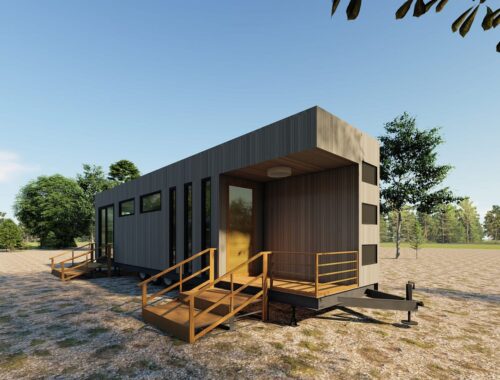Cody Townsend Is Skiing North America’s 50 Best Lines
>
When you buy something using the retail links in our stories, we earn an affiliate commission that helps pay for our work. Read more about Outside’s affiliate policy.
Last week, big mountain skier Cody Townsend announced that he’s going to attempt to ski every line documented in Fifty Classic Ski Descents of North America, a canonical ski mountaineering book written by Chris Davenport, Art Burrows, and Penn Newhard. The book, published in 2010, includes routes as far-flung as the 3,640-foot Polar Star Couloir on Baffin Island’s Mount Beluga and Denali’s Messner Couloir. No one has yet skied all 50 lines.
Townsend has been chewing on the idea for a while. “I’ve been skiing one style—ski porn, ski movie style—for the last 15 years, and I felt like I had maxed out in that world. I did everything I wanted to do,” he says. “I started going on human-poweredexpeditions and found this whole new challenge that I’ve been completely enraptured by.” Townsend spent a year researching the lines and mapping out his travels, trying to determine whether the feat was possible. His biggest concern was risk tolerance. After decades of backcountry skiing, Townsend has grown familiar with his limit. “For what I know, what I ski, and my experience in the mountains, each line seemed like I could climb and descend it safely and come home at the end of the day,” he says.
When Davenport, Burrows, and Newhard wrote the book—which was inspired by the 1979 tome 50 Classic Climbs of North America—they consulted a wide circle of mountaineers and skiers, including well-known figures like Hilaree O’Neill and Jimmy Chin. They didn’t set out to collect the hardest lines, nor did they build a guidebook. “It was a community project that speaks to the close-knit community that backcountry skiers are on a national basis,” says Newhard. The result, which includes essays by and about many of the mountaineers they consulted, is a snapshot of North American ski mountaineering at its best. “It’s really a coffee table book designed to pique people’s curiosity and interest. We wanted it to be motivational and aspirational,” he says.
Townsend hopes to complete his mission over the course of three years, but the greatest challenge won’t be 8,000-foot bootpacks or steep, technical descents (though there will be plenty of those). There are three lines Townsend believes will be the most difficult: 14,470-foot University Peak and the Mira Face of 18,008-foot Mount St. Elias, both in Alaska’s Wrangell-St. Elias range, and the north face of 12,972-foot Mount Robson, in Alberta. On all three, his success will depend on finding stable snow and clear skies. “The conditions have to line up perfectly. Specifically on those cruxes, I need to have a lot of luck, with the weather in my favor,” he says. “Three years is pretty audacious, but I also think it’s possible.”
Audacious is precisely how Davenport described the undertaking, but if anyone can make it happen, he believes it’s Townsend. “It will take a skier like Cody, who has paid his dues and skied difficult lines all over the world,” says Davenport, who has skied 24 of the lines. “The most exciting thing, though, is Cody’s disposition. He has a way of looking at the mountains as a playground, and I think he’s going into this with the right attitude. He’s going to take the time to really give these mountains the respect they deserve.”
Townsend’s journey has already started—last week he left his home base in Lake Tahoe, California, for Utah, and is hoping to check off 11,132-foot Mount Superior, 12,482-foot Mount Tukuhnikivatz, and the Hypodermic Needle couloir on 11,150-footNorth Thunder Mountain while conditions remain stable. At the end of the season, he’ll head north, to make his first attempt on University Peak. Filmer and ski mountaineer Bjarne Salen will accompany him throughout the entire project, and a rotating crew of friends and skiers—including his wife, professional skier Elyse Saugstad, and Davenport and Chin—will join for individual expeditions.
“The book is really a celebration of beauty and what nature offers us as skiers. The aesthetic component was the primary driver in putting together the book,” says Davenport. Towsend’s motives are similar.
“I’ve been lucky enough to travel the entire world and I’ve realized that North American skiing is what I love the most. The snow, the mountains, the wildness of it all. So this book in particular speaks to me,” he says. The journey should be, at its core, about enjoyment and fun, he says. But he understands that this mission will involve plenty of suffering and fear, too. “This will be the hardest thing I’ve ever done in my life.”
You May Also Like

HOW TO PREVENT MOLD AND MILDEW ON TRUCK TARPAULINS?
November 22, 2024
ユニットハウスのメリットとデメリットを徹底解説
March 20, 2025